Mazda CX-5 Vs Hyundai Tucson: Which Compact SUV is Right for You?
For many families, the choice vehicle to handle day-to-day duties has become the compact SUV.
With ample space for a family of four or five, adequate cargo capacity, all-weather capability, and acceptable fuel economy, these vehicles really put the utility in sport utility vehicle. Two popular choices in the segment are the Hyundai Tucson and the Mazda CX-5.
All new for the 2022 model year, the Hyundai Tucson is now in its fourth generation of existence, with a lineage dating back over 15 years. Although the Mazda CX-5 nameplate hasn’t been around as long, the current generation of the CX-5 has been on sale longer; since the 2017 model year. However, the vehicle did receive a refresh for the 2022 model year with revised styling and added technology.
To see how the two models now stack up, we’ve lined them up side-by-side and dug deep into the specifications and features.
Cabin Space
Tucson: The latest Tucson is much larger than its predecessors. With a wheelbase that now measures 108.5 inches (2,755 mm), it contributes to one of the largest rear seat legrooms in the segment at 41.3 inches (1,050 mm). Up front, occupants also enjoy ample legroom, with 41.4 inches (1,052 mm) on hand. Head room isn’t as generous, with lower trims offering 40.1 inches (1,019 mm) up front, and 39.4 inches (1,002 mm) in the rear. Higher trims with the panoramic sunroof, which limits headroom, drops those numbers down to 38.1 and 39.0 inches (968 and 990 mm).
Get a Quote on a New Hyundai Tucson or Mazda CX-5Shoulder room up front is 57.6 inches (1,464 mm), along with 54.5 inches (1,385 mm) of hip room. Rear space is a bit tighter, but not by much. Shoulder room is 56.0 and hip room 53.9 inches (1,422 and 1,369 mm).
CX-5: In the Mazda CX-5, front passengers receive a bit more headroom, with 39.7 inches (1,008 mm) on base models or 39.3 in.(998 mm) in trims with the optional sunroof. Rear-seat passengers get 39 inches (990 mm) of headroom, which is unaffected whether there is a sunroof or not.
Up front, legroom is a bit less than the Tucson, with the CX-5 measuring in at 41 inches (1,041 mm). It’s the same story for riders in the back, as they get 39.6 in. (1,005 mm) of legroom. Shoulder room in the front of the Mazda is a bit lower than the Hyundai, measuring at 57.1 inches (1,451 mm), but hip room is greater at 55.2 inches (1,402 mm). For occupants of the rear seats it’s the same story. Shoulder room is a bit smaller at 54.8 inches (1,392 mm), but hip room is more generous at 55.3 inches (1,405 mm).
Bottom Line: Both vehicles offer ample space for passengers, with each vehicle excelling in different categories. Overall though, the Hyundai Tucson does hold the advantage in more categories, and has a decisive edge in rear seat legroom.
Cargo Space and Towing
Tucson: Hyundai lists a cavernous 38.7 cubic feet (1,096 L) of rear cargo space with the rear seats raised. Lower the seat backs and cargo capacity expands to a segment leading 80.3 cubes (2,274 L). That figure beats most mid-size SUVs. The hybrid Tucson does see a slight reduction in cargo space when the rear seats are lowered, but still measure in at generous 74.5 cubic feet (2,110 L).
All Tucsons, regardless of drivetrain, can tow up to 2,000 lb (907 kg) when properly equipped.
CX-5: The Mazda CX-5 is not as large as the Tucson, and it shows up with cargo capacity. On offer is 30.9 cubic feet (874 liters) of cargo volume behind the rear seats, and the maximum amount the CX-5 is listed to accommodate is 59.6 cubic feet (1,686 liters) when the back seats are folded. To our eyes, the difference in cargo capacity does not seem this large between the two vehicles, and the difference may have a bit to do with official measuring techniques.
Like the Tucson, the CX-5’s maximum towing capacity is 2,000 lbs when properly equipped, regardless of engine choice.
Bottom Line: Although both vehicles can tow the same amount of weight, the Tucson has a decisive cargo advantage with or without the rear seat backs folded. It’s also nice that the hybrid models, even the Plug-in, don’t sacrifice cargo capacity too much.
Technology and Features
Tucson: The Tucson comes standard with an 8.0 inch touchscreen, with a 10.25 inch screen available on higher trim models. Wireless Android Auto and Apple CarPlay are available on certain trim levels. HD Radio is standard equipment, as are six speakers. Keyless entry, driver’s auto up/down window, two USB slots, and 17-inch alloy wheels are also part of the entry level Tucson SE package.
The SEL trim adds two more USB outlets in the second row as well as a heated power driver’s seat. Hyundai’s BlueLink connected car system is part of the package along with a free trial. As well, the exterior gains LED lighting all around. The optional Convenience Package adds a hands-free power liftgate, 19-inch alloys, power sunroof, a fully digital instrument cluster, lane view cameras, wireless charger, dual-zone auto climate control, and more. The Premium Package brings leather seating, a Bose audio system, and some additional exterior styling upgrades.
SEE ALSO: 2022 Hyundai Tucson Hybrid Review: Stylin’ On YouThe top trim Limited adds the large panoramic glass roof, voice recognition, a power-adjustable passenger seat, driver’s memory seat function, heated rear seats, the larger infotainment screen, the 360-degree camera system, and more.
CX-5: The Mazda CX-5’s entry-grade S trim starts with auto on/off LED headlights, 17-inch alloy wheels, air conditioning, a 10.25-inch infotainment screen, and a four-speaker stereo. The S Select trim adds auto-leveling headlights, passive keyless entry, dual-zone automatic A/C, a six-way power driver’s seat, heated front seats, and a six-speaker stereo, and two rear USB charging ports.
The S Preferred trim is next, and it brings a power tailgate, auto-dimming rearview mirror, leather seats, and a sunroof. The S Carbon Edition is next and comes with 19-inch wheels and special interior as well as exterior trim. The S Premium trim is a step up from the S Preferred and adds steering-wheel-mounted paddle shifters, LED daytime running lights, LED taillights, satellite radio, and a 7.0-inch digital gauge display.
The S Premium Plus builds on that with a windshield wiper deicer, power folding side mirrors, heated rear seats, ventilated front seats, a heated steering wheel, and a head-up driver display. The Turbo S is the second highest trim that includes everything found in the S Premium Plus, but adds the turbocharged engine, wireless phone charging, and unique interior and exterior trim. At the top of the range is the Turbo Signature trim, which comes with a frameless rearview mirror, traffic sign recognition, front and rear parking sensors, 360-degree surround-view cameras, a driver attention alert, and rear collision avoidance with automatic braking.
Bottom Line: Both vehicles can be had with the latest comfort, convenience, safety, and technology features. The Tucson has a few features not found in the CX-5 and the CX-5 can be had with a few features not found in the Tucson. Which vehicle has the better features will come down to personal preference and trim level selection.
Powertrains
Tucson: Hyundai offers three powertrain options for the Tucson. Sticking to a purely gasoline engine, the SUV comes equipped with a 2.5-liter naturally-aspirated four-cylinder that makes 187 horsepower and 178 lb-ft of torque. An eight-speed automatic is the only transmission available, paired to either standard front-wheel drive or the optional all-wheel drive.
The hybrid model replaces the 2.5-liter engine with a smaller, 1.6-liter turbocharged unit. An electric motor is paired to the four-cylinder for a combined system output of 227 hp and 258 lb-ft of torque. The electric motor draws from a 1.49-kWh battery that’s placed under the rear seats. Unlike many hybrids, Hyundai has elected to fit the Tucson with a six-speed automatic transmission instead of a CVT. All-wheel drive is standard on all hybrid models.
For more efficiency and increased power, there is also the Tucson Plug-in Hybrid variant, which uses a stronger electric motor for a total system output of 261 hp.
CX-5: In the Mazda CX-5, gasoline is the only power source. All of the S trims use a 2.5L four-cylinder engine that makes 187 hp and 186 lb-ft of torque. The two Turbo trim levels use, you guessed it, a turbocharged engine. In the CX-5, it’s a 2.5L four-cylinder that makes as much as 250 hp and 320 lb-ft of torque on premium gasoline, or 227 hp and 310 lb-ft on regular-grade gas.
Both engines are paired to a six-speed automatic transmission and all-wheel drive which is now standard on all CX-5 trim levels.
Bottom Line: Regular versions of the Tucson and CX-5 come with the same sized engine making nearly identical levels of power. If it’s upmost efficiency one is after, the Tucson hybrids are the obvious choice. But if it’s a small performance SUV that has the most appeal, the CX-5 Turbo will gladly fit that bill.
Fuel Economy
Tucson: Starting with gas-only Tucsons, the front-wheel drive models are officially rated at 26 mpg city and 33 mpg highway. The all-wheel drive models sees those numbers drop to 24 mpg city, and 29 mpg highway.
The hybrid model, despite being more powerful, is still more efficient. Stick to the entry level Blue trim and expect a 38 mpg average. Move up to the better equipped models and the Tucson Hybrid scores a slightly lower 37 mpg combined. The Tucson Plug-in Hybrid is rated at 80 MPGe, or 35 mpg once the electric battery is depleted. It is capable of travelling upwards of 33 miles on a single charge of electricity before the gas engine is required.
CX-5: Unlike the Tucson, all versions of the CX-5 come standard with all-whee drive. The official fuel economy estimates for the 2.5L non-turbo engine are rated for 24 mpg city and 30 mpg highway. With the turbocharged engine, the all-wheel drive CX-5 is rated for 22 mpg city, and 27 mpg highway.
SEE ALSO: 2022 Mazda CX-5 Review: For Those Who Think Young
Bottom Line: The most efficient vehicles are obviously the Tucson Hybrids, followed by the front-wheel drive gas-only Hyundai. But when equipped with non-hybrid, non-turbocharged engines and all-wheel drive, The CX-5 holds a slim advantage with a slightly better highway fuel economy rating.
Safety
Tucson: The latest Tucson has earned a four-star safety rating from the National Highway Traffic Safety Administration (NHTSA) and a Top Safety Pick + from the Insurance Institute for Highway Safety (IIHS).
Safety assists that come standard on the vehicle include automated emergency braking, lane keep and follow assists, and high beam assist. The SEL trim adds blind spot monitoring, rear cross-traffic alert, safe exit assist, and adaptive cruise control. Limited trims add a 360-degree camera, rear parking sensors, blind-spot view monitor, rain-sensing wipers, and Highway Driving Assist.
CX-5: The Mazda CX-5 matches the Tucson with a a Top Safety Pick + rating from the IIHS, but achieves a slightly better five star safety rating from the NHTSA.
All CX-5 trim levels also come equipped with a package of active driver safety assists comprising of blind-spot monitoring, rear cross-traffic alert, radar cruise with stop and go, collision and pedestrian detection with brake support, lane departure warning, and lane keep assist. The S Premium Plus trim level adds adaptive headlights. Finally, the Turbo Signature trim level gains front and rear parking sensors, a 360-degree surround-view monitor, driver attention alert, and rear collision detection with brake support.
Bottom Line: Both vehicles offer similar safety technology, but the Mazda CX-5 holds a slim advantage when it comes to the crash test rating received from NHTSA.
Styling
Tucson: The Tucson features a unique look amongst the world of compact SUVs. Hyundai’s designers have cleverly hid the front-end lighting elements within the grille, only giving the Tucson its full “face” when lit. Other stand-out features include a full-width LED bar connecting the taillights, and the textured D-pillar, which echoes a design found on the wheel arches.
SEE ALSO: Hyundai Tucson Hybrid vs Ford Escape PHEV ComparisonEdgy and angular, the Tucson cuts a distinct profile, and manages to look at home in and out of the city.
CX-5: The CX-5 has long been regarded as one of the more stylish and peasant looking compact SUVS. The general look of the vehicle has processed through an evolutionary path over time, never straying far from the original CX-5’s look. Although some may be finding the look to be a bit tired, others appreciate the constant, good looking design direction.
The most notable feature on the CX-5 is the large recessed grille that adds a snazzy three-dimensional element to the vehicle’s front-end.
Bottom Line: Styling is a personal preference so we can’t declare a winner. But with the CX-5 and the Tucson, it is definitely a case of the familiar versus the boldly new.
Pricing
Tucson: The Tucson lineup begins at the SE trim in front-drive form, which is$26,745 including destination. Next up is the SEL, which comes in at $28,045. It offers two option packages: the $2,600 Convenience Package, and the $1,700 Premium Package.. The N-Line sits in the middle of the lineup, priced from $32,145.
New this year is the XRT trim package, a bolder looking upgrade, that costs $32,795 after destination charges. Finally, at the top of the gas-only range sits the $36,245 Tucson Limited. Adding AWD to any of the aforementioned trims bumps the asking price up by $,1500.
AWD is standard on the hybrid models, with the Blue being the most affordable at $30,595. The SEL Convenience is next at $33,195, followed by the range topping Hybrid Limited at $38,895. The Plug-in Hybrid commands a price of $36,145 for the SE or $43,945 for the limited.
CX-5: Mazda’s pricing for the CX-5 starts at off at $27,475 for the 2.5 S trim level, including destination charges. The 2.5 S Select comes in at $29,475, followed by the 2.5 S Preferred at $30,735. The stylish 2.5 S Carbon Edition commands a price of $31,585. The 2.5 S Premium costs $33,885 followed by the $35,525 2.5 S Premium Plus
Turbocharged CX-5’s start at $37,975 and top out at $40,225 for the 2.5 Turbo Signature.
Bottom Line: With all-wheel drive added to the gas-only trims of the Tucson, pricing lines up very closely to the AWD-only Mazda CX-5. But if all-wheel drive isn’t required, the Tucson can be had at a slightly lower price, trim vs trim.
In Conclusion
The Mazda CX-5 and Hyundai Tucson are two different takes on the compact SUV. The Tucson is a very family-focused product, offering a variety of choice in drivetrains, features, and configurations. The CX-5 is a more premium feeling SUV, that puts more of an emphasis on styling and driving feel. It really comes down to where your preferences are. But if it’s an all-around vehicle for daily commuting, family road trips, and runs to the local big box stores, we’d give the Tucson a slight edge.
Become an AutoGuide insider. Get the latest from the automotive world first by subscribing to our newsletter here.
A 20+ year industry veteran, Mike rejoins the AutoGuide team as the Managing Editor. He started his career at a young age working at dealerships, car rentals, and used car advertisers. He then found his true passion, automotive writing. After contributing to multiple websites for several years, he spent the next six years working at the head office of an automotive OEM, before returning back to the field he loves. He is a member of the Automobile Journalists Association of Canada (AJAC), and Midwest Automotive Media Association (MAMA). He's the recipient of a feature writing of the year award and multiple video of the year awards.
More by Mike Schlee



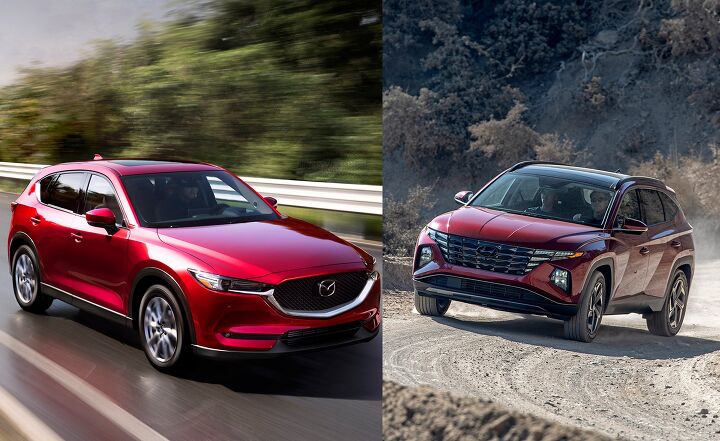
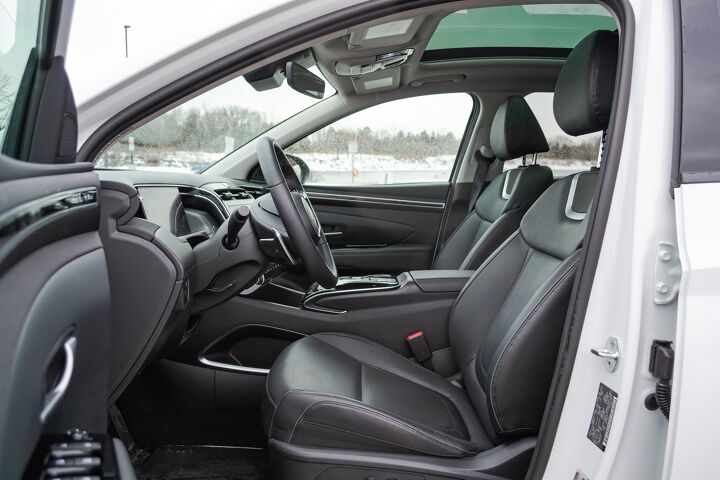





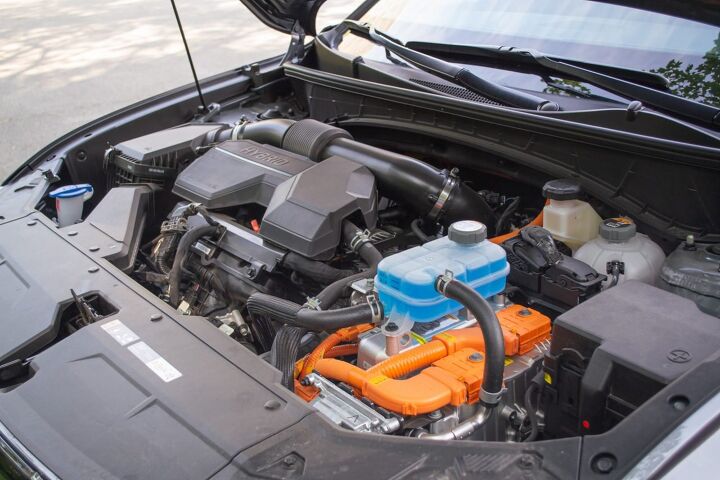








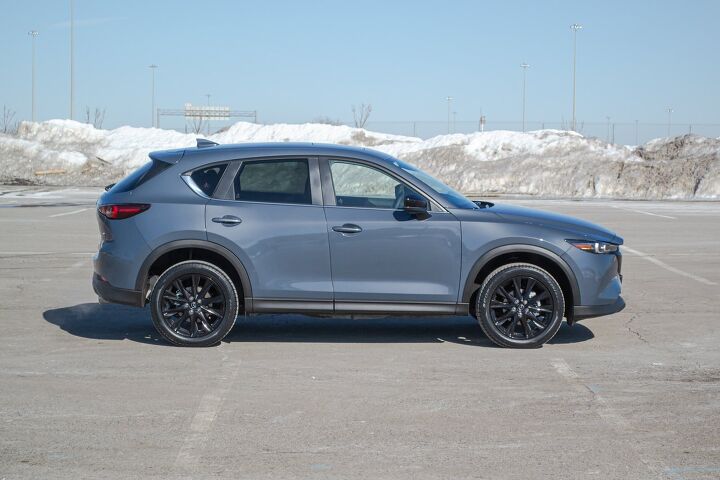














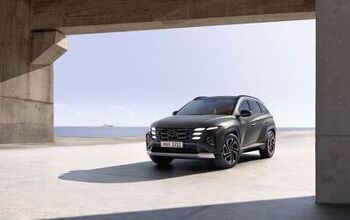
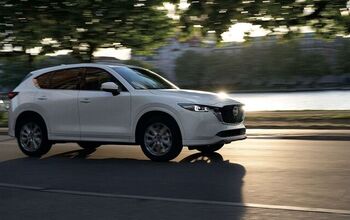


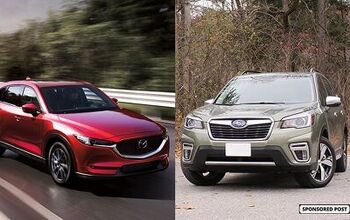
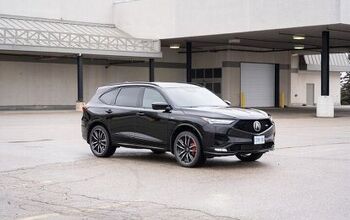


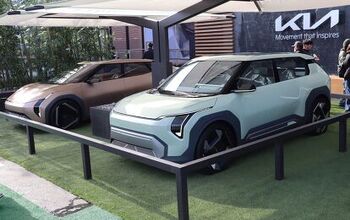


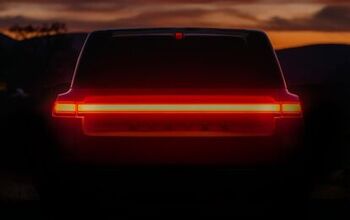
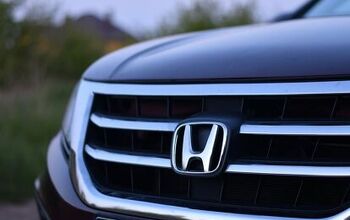


Comments
Join the conversation
Keep in mind that the Tucson reviewed here is all new for 2022 - so any comparisons with older models is irrelevant...
In case you hadn't noticed, the Tucson reviewed here is all new. the 2016-2021 TL models were much smaller and not nearly as well equipped or refined as the new model. So comparing an earlier model to this model is an apples to oranges comparison. I own a TL series Tucson and have driven several of the new models. Total night and day difference between the two.